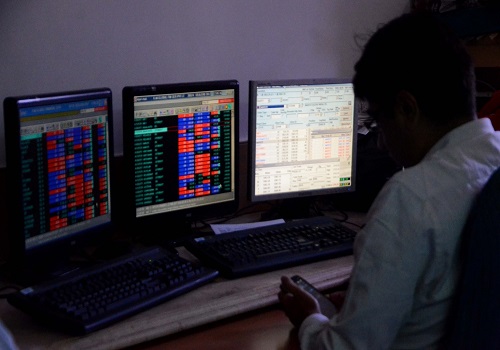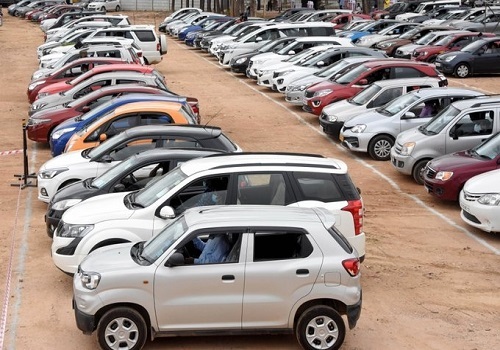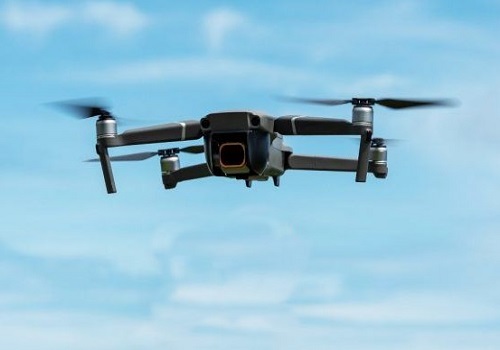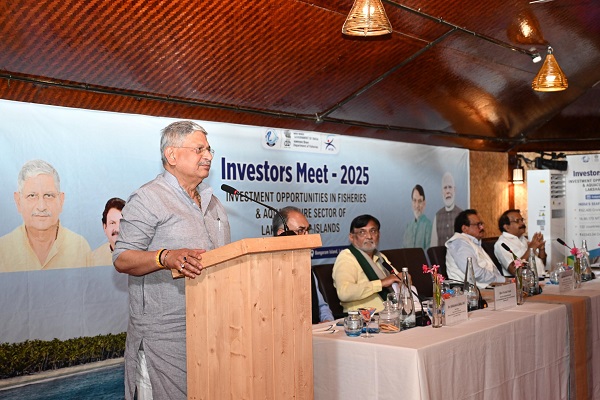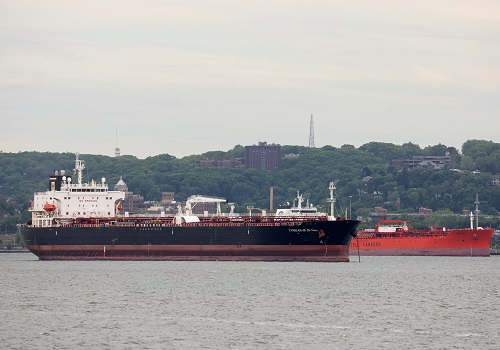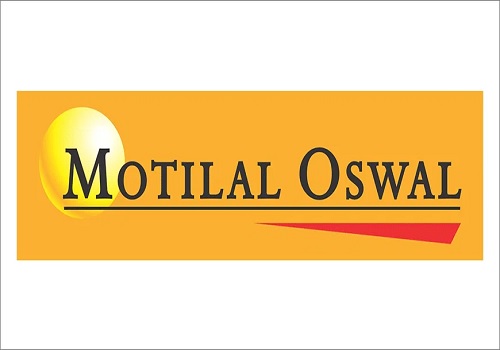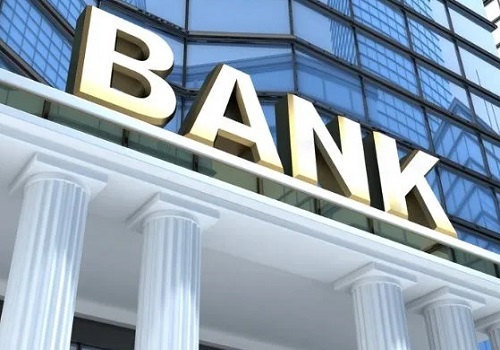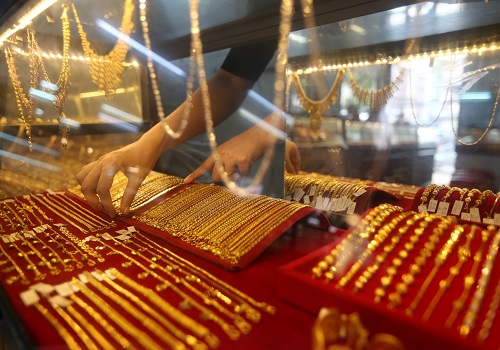Oil & Gas Sector Update : Iran-Israel conflict could lead to a supply crunch - Motilal Oswal Financial Services Ltd

* The conflict intensifies: The clash between Iran and Israel escalated significantly over the weekend, as Iran launched drone and rocket attacks on Israel. This conflict has, in turn, led to the expectation that crude oil, refining GRMs, and spot LNG prices could scale new highs in the near term. While our base case scenario remains that de-escalation efforts will likely control the crisis, in this note, we examine the implications for commodities and stocks if the crisis escalates further.
* The Strait of Hormuz (SoH) remains critical for oil, refined products, and LNG: About 15/6mnbopd of crude oil/refined products flow through the SoH (i.e., 15% and 8% of global crude and refined product consumption, respectively), which Iran has threatened to block. Further, we note that ~20% of the global LNG trade moves via SoH, including almost all LNG exports from Qatar and the UAE.
* Three key implications in the event of SoH blockade: 1) if Iran successfully enforces a complete or partial blockade of the SoH, we anticipate materially higher crude oil prices, refining GRM, and spot LNG prices; 2) while alternative routes do exist, they may only be able to accommodate a fraction (~7-8mnbopd of crude oil/refined products) of the volume currently passing through the SoH (~21mnbopd), and that too at elevated freight costs; 3) while investors focus on oil, we believe that spot LNG prices will witness even sharper escalation if the SoH is closed due to the absence of alternative routes.
All about the SoH
* The SoH is a narrow sea passage between Oman and Iran. It is ~40km wide at the narrowest point, with 2km of navigable channels for incoming and outgoing ships. It is the key route through which crude oil is exported by Saudi Arabia (~6.3mnbopd), the UAE, Kuwait, Qatar, Iraq (3.3mnbopd) and Iran (1.3mnbopd).
* Oil flow via the SoH was 21mnbopd or 21% of global oil consumption in CY22. Of this, ~15mnbopd was crude oil & condensate, while ~6mnbopd was refined products.
* We further note that ~20% of global LNG trade moves through SoH, including almost all LNG exports from Qatar and the UAE. Unlike oil, for which alternative routes via the Red Sea are available, no alternative routes are available for LNG.
Can commodity flows continue through the alternative routes?
* Both Saudi Arabia and the UAE have alternative export routes, which avoid the SoH. Saudi Arabia has the East-West pipeline with a capacity of ~7mnbopd according to the IEA. However, this pipeline opens up into the Red Sea, where traffic flow has already been disrupted due to attacks by Houthi rebels.
* The UAE has onshore oil fields linked with Fujairah export terminal with a capacity of 1.5mnbopd; however, of this, ~30-40% capacity is already being utilized as per the IEA.
What is the risk to Iranís crude oil exports?
* Iran currently exports around 1.5mnbopd of crude oil with China being the biggest customer. The IEA estimates that Iranís oil production would rise by 280kbopd in CY24. Should the crisis intensify, we now believe this additional supply growth could be at risk.
Will OPEC+ step in and raise production?
* We believe the motivation for OPEC+ to raise production remains strong. In a bid to balance the oil markets, OPECís supply has been declining. The supply dropped by more than 1.5mnbopd to 41.7mnbopd in Marí24 from 43.2mnbopd in Sepí23.
* However, OPEC+ has been losing market share. We note that in Marí24, the IEA raised its global oil supply guidance by 0.8mnbopd to 102.9mnbopd, even as it adjusted the production guidance of OPEC+ downwards.
* According to the EIAís Aprí24 update, the US oil production is set to rise to 13.2/13.7mnbopd in CY24/25 from 12.9mnbopd in CY23. In key markets, such as India, the US has been gaining market share at the expense of other producers.
* The IEA forecasts non-OPEC production growth at 1.6mnbopd in CY24. This is almost in line with the EIAís production growth guidance of 1.5mnbopd from mainly the US, Canada, Guyana and Brazil. As such, we believe OPEC+ could feel the pressure to gain market share and use this opportunity to end the current production curbs.
Which importer countries are the most dependent on product flow via SoH?
* The IEA estimates that ~80% of crude oil exported via the SoH route flows through to Asia with China, India, and Japan being the top destinations.
* About 80% of LNG being transported via the SoH is intended for Asian markets, and an estimated 25% of all of Asiaís LNG imports in CY23 were delivered via the SoH route.
* In CY23, China, India, and Korea were the top LNG import markets, which were dependent on LNG trade flows via the SoH.
Headwinds for OMCs/CGDs; outlook mixed for GAIL
* Overall, we see elevated crude/refined product prices as negative for integrated margins of oil marketing companies (HPCL>BPCL>IOCL). Every INR1 change in gross marketing margin impacts consolidated EBITDA of HPCL/BPCL/IOCL by 25%/22%/23% for FY25.
* High spot LNG prices could potentially dent the volume and margin outlook for gas utilities (GAIL/ PLNG) and the CGD sector (GUJGA, IGL, MAHGL) respectively.
* RELIANCE could be a beneficiary of elevated GRMs, while high crude prices bring limited earnings surprises for ONGC and OINL, given their net realization remains capped at ~USD75/bbl.
For More Motilal Oswal Securities Ltd Disclaimer http://www.motilaloswal.com/MOSLdisclaimer/disclaimer.html
SEBI Registration number is INH000000412


